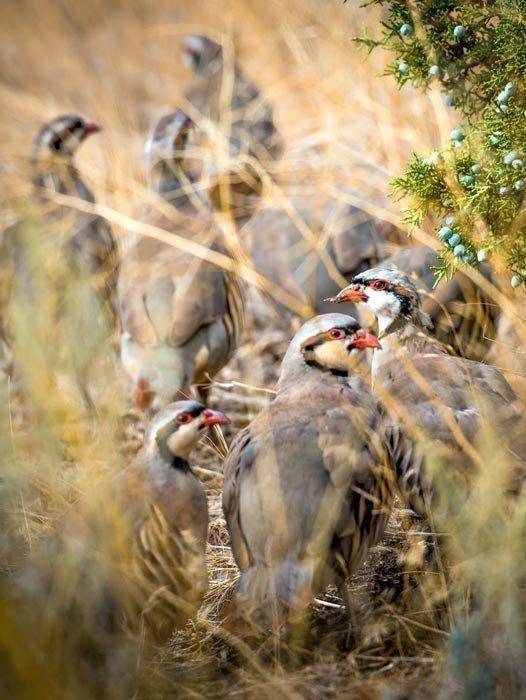The number of chukar partridge has dipped in Utah this year. The hunt starts Sept. 29.
DWR Press Release
Chukar and gray partridge hunt opens Sept. 29
Biologists with the Division of Wildlife Resources have been able to fly only one chukar partridge survey this fall, but results of that survey — coupled with observations they’ve made in the field — indicate the number of chukars is down this year.
That doesn’t surprise Jason Robinson, upland game coordinator for the DWR. He says chukars in the West follow a population cycle that lasts about nine to 10 years. The population remains relatively stable for about eight years. Then, for a single year, numbers skyrocket. The year after the spike, numbers return to average. The population will typically stay at that level until the next spike happens about eight years later.
Robinson says the last spike in Utah actually lasted for two years, 2015 and 2016. “We’ve never seen that before,” he says, “and we’re not exactly sure why it happened. Chukar hunters, myself included, were definitely happy to have two years of extremely high numbers, though.”
In 2017, the number of chukar partridge returned to normal levels. This fall, they’ve declined a bit from last year.
“There are still birds out there, though,” Robinson says on the eve of Utah’s annual chukar hunt. “You’ll just have to walk farther, between coveys. You can still have a good hunt, but you’ll have to put in more effort to find the birds.”
Utah’s general chukar hunt opens Sept. 29. Before the hunt opens, DWR biologists will release chukars in some areas in the state. See a map where biologists will release chukars.
Helicopter survey results
On Aug. 28, DWR biologists climbed into a helicopter and flew over chukar habitat in central Box Elder County. They counted eight chukars per square mile. That’s down from 12 per square mile in 2017. “It was the second lowest count in the county since surveys started there in 2009,” Robinson says.
Biologists typically fly a survey over north-central Tooele County too. The helicopter that was used to fly the survey in Box Elder County has been pulled away to help monitor wildfires in Utah.
“We hope to fly the Tooele County survey in September,” he says, “just before the hunt starts. Even if we can’t fly the Tooele County survey this year, results from the Box Elder County survey, observations myself and other biologists have made in the field — and the fact that chukar populations follow reliable population patterns — are enough to indicate that numbers are down this year.”
Gray partridge doing well
In addition to the chukar hunt, Utah’s gray partridge hunt also opens on Sept. 29. Gray partridge, often called Huns, are found almost entirely in Box Elder County. In the eastern part of the county, the birds are found mostly in grain fields. In the western part, they live mostly in sagebrush habitat. Riparian corridors are especially attractive to gray partridge that live in areas covered with sagebrush.
“Another thing to remember is that gray partridge are especially attracted to edges, places where one habitat type transitions into a different type of habitat,” Robinson says. “For example, the edge of a grain field, or where sagebrush transitions into grass, can be especially good places to hunt.”
Robinson says gray partridge numbers are up this year, and he expects a good hunt.
Utah’s general chukar and gray partridge hunt opens Sept. 29. If you’re not currently hunting upland game in Utah, Robinson provides five reasons to consider giving it a try. You can read his list on the Utah Wildlife Blog.
Upland Game Slam
If you’d like to add some fun to your hunt, consider participating in Utah’s Upland Game Slam. One of the slams — the Blister Slam — will reward you for taking a five chukar limit in a single day. Learn more about the Upland Game Slam.

